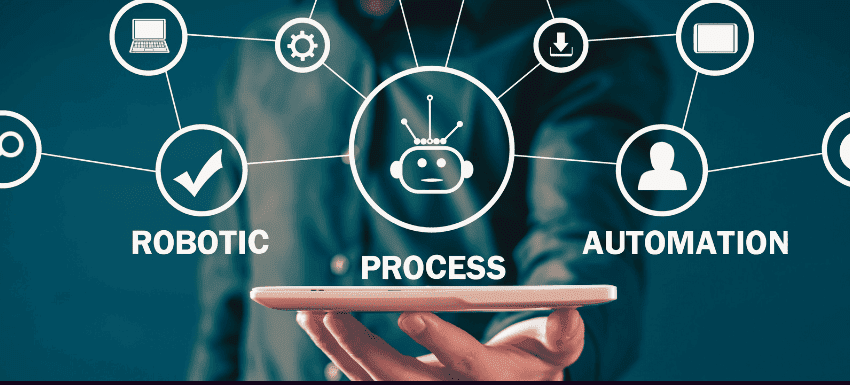IT automation explains using technology to streamline and automate repetitive and manual operations to increase efficiency, reduce cost and improve customer experience.
IT Automation: An Overview
IT automation uses technology and intelligent systems to modernize and optimize tasks, processes, and operations. Automation makes use of scripting to the latest tech, such as Artificial Intelligence (AI), Machine Learning (ML), and Robotic Process Automation (RPA).
It carries out rule-based tasks with or without human intervention.
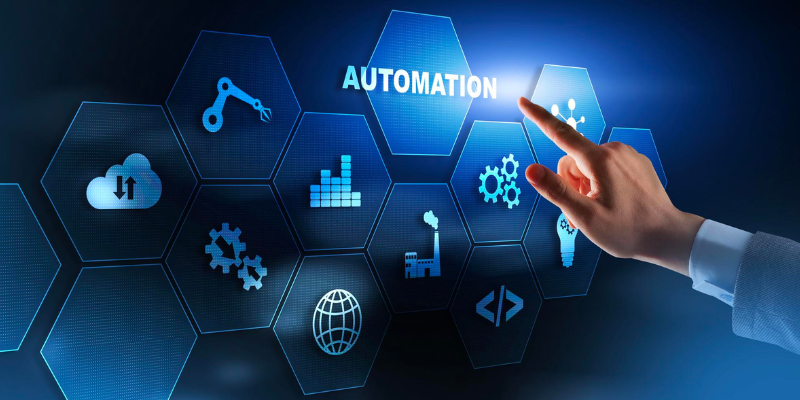
The primary objective of IT automation is to automate activities that require maximum human efforts to reduce errors, increase productivity and cost reduction and enhance the customer experience.
Various industries, like healthcare, retail, manufacturing, logistics, etc., are adopting automation to smoothen manual and repetitive activities, which in turn empowers decision-making and the identification of anomalies.
By automating manual tasks, IT teams can focus on valuable work, such as innovation and strategic objectives, to add value to the organization.
Due to technological advancements, IT automation is not limited to on-premises systems. Still, it has moved to cloud-based services, containerization, and microservices, allowing businesses to allocate resources effectively and scale their operations.
This section will explore the IT automation tools and technologies gaining traction in the market and being increasingly adopted.
Emerging IT Automation Trends
The field of IT automation is continually shaped by emerging trends that encompass new technologies, practices, and approaches. These trends are driven by advancements in areas such as AI, NLP (Natural language processing), ML, RPA, cloud computing, and other relevant areas.
According to Statista, it is projected that the global automation industry will reach a staggering amount of 265 billion U.S. dollars.
Let’s proceed to take a look at some of these key emerging IT automation trends.
Low-code and No-code
Low-code platforms assist IT professionals, coders, and developers with low coding skills to create customized applications. Conversely, no-code platforms empower business users without coding knowledge to independently address their specific development needs.

Taking into consideration the easiness and rapid development of applications through low-code and no-code platforms, the global low-code market is expected to reach approximately 65 billion USD by 2027, as per Statista.
These platforms offer users visual interfaces and ready-made components. They empowers individuals to effortlessly create workflows, automate tasks, and seamlessly integrate various systems without the need for extensive coding. The aim is to streamline operations and minimize the effort.
Organizations and individuals who lack development skills but aim to keep up with automation and digital acceleration in the modern era can leverage platforms that enable them to stay competitive.
These platforms come with numerous advantages, including cost reduction, time savings, increased productivity, and more. Examples of low-code and no-code platforms are Microsoft Power Apps and IBM Watson Orchestrate.
AI Hyperautomation with NLP and ML
Hyperautomation, an emerging trend in Automation, has gained recognition from Gartner as one of the top technological trends. Unlike standard Automation, hyperautomation combines advanced technologies such as AI, ML, RPA, NLP, etc.
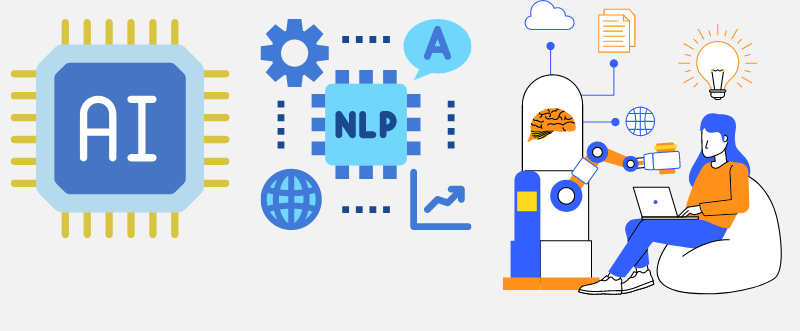
These cutting-edge technologies enhance the automation process to effectively handle complex and unexpected tasks that typically require human intelligence or intervention.
The versatility of Hyperautomation applies to various industries, including healthcare, supply chain management, banking, financial services (BFS), and retail, among others. Its market size is expected to reach USD 118.66 billion in 2030 from USD 35.08 Billion in 2022, as per Grandviewresearch.
The hyperautomation process significantly enhances efficiency, productivity, and decision-making capabilities. Automating various processes, patterns, and workflows brings about a notable improvement in performance.
ML continuously enhances the performance of hyperautomation, resulting in its remarkable effectiveness in pattern recognition and trend prediction. In addition, NLP empowers tasks involving comprehension of written text, understanding language nuances, and facilitating meaningful interactions.
Hyperautomation solutions provide numerous advantages to various industries. By simplifying processes and automating tasks, these solutions enhance effectiveness, precision, and customer satisfaction. Moreover, they empower organizations to tackle business challenges and stay competitive in their respective fields.
Cloud Automation
Cloud automation involves using various methodologies and tools to optimize the management, deployment, and operation of cloud-based assets and services. It relies on software and scripts that automate tasks previously conducted manually by IT administrators.
The primary goal of cloud automation is to improve efficiency, minimize human errors, and quickly scale cloud resources based on emerging requirements.
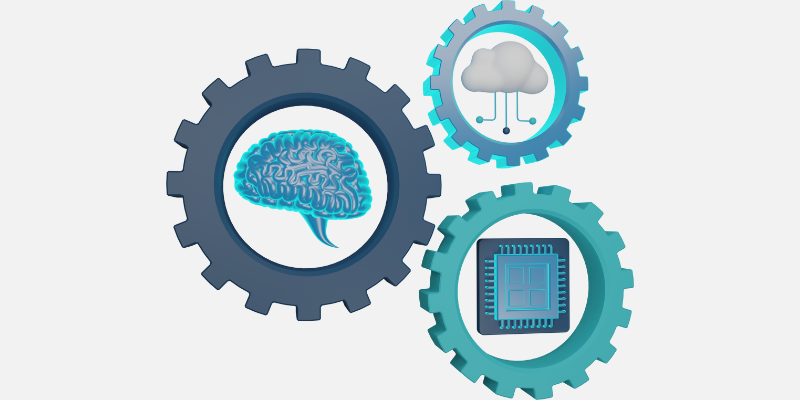
Automating various aspects of the cloud environment encompasses a broad range of tasks, including assigning resources, setting up configurations, managing deployments, ensuring security and compliance, monitoring performance, and scaling resources.
The market size of Cloud Automation is estimated to reach USD 414.85B by 2030 from a Market of USD 53B in 2021, based on a report from verifiedmarketresearch.
Among the tasks that can be automated are creating virtual machines, configuring storage, installing software, adjusting security measures, optimizing performance, deploying code, and overseeing applications.
To achieve cloud automation, some methods include ready-to-use cloud management tools or utilizing Infrastructure, such as Code (IaC) and Orchestration tools. However, it’s important to assess your organization’s requirements and factors, such as the size of your cloud environment and the desired level of automation, before implementing any automation solutions.
There are advantages to embracing cloud automation. It brings increased agility to organizations by speeding up the time to market for products or services. Additionally, it leads to cost savings by optimizing resource utilization. Moreover, it enables scalability based on business needs.
Many top providers offer cloud automation solutions, including Amazon Web Services (AWS), Microsoft Azure, Google Cloud Platform (GCP), Terraform, Red Hat Ansible Automation Platform, VMware vRealize Automation, and others.
Modern Orchestration Platform
Orchestration, in the current modern tech world, serves as a tool for organizations empowering them to streamline and supervise complex workflows. By selecting the type of orchestration, businesses can enhance their efficiency, flexibility, and scalability.
Orchestration, in essence, encompasses the coordination and management of computer systems, applications, and services to achieve workflows or processes. These workflows automate various tasks like data processing, application deployment, infrastructure provisioning, machine learning, and business process automation.
Organizations can leverage different orchestration types according to their requirements. Examples of such types include cloud orchestration, application orchestration, workflow orchestration, service orchestration, and data orchestration.
Data Pipeline Orchestration
Managing complex data pipelines can be challenging, with a multitude of tasks to handle and the potential, for errors. Thankfully data pipeline orchestration offers a solution by automating these tasks ensuring reliability and efficiency.
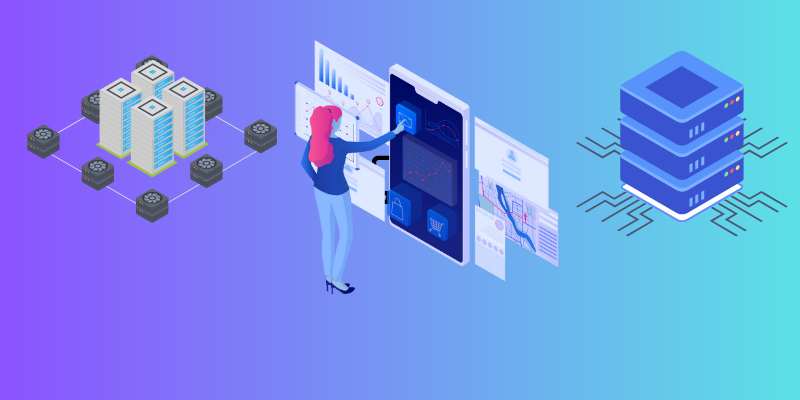
Data pipeline orchestration involves automating the execution and monitoring of data pipelines. It includes coordinating task dependencies executing tasks in the desired order detecting and resolving errors, or generating alerts and logs. Without an orchestration system in place, maintaining data becomes highly difficult.
Tools used for data pipeline orchestration are Airflow, Luigi, Apache NiFi, StreamSets, Google Cloud Dataflow, Amazon Simple Workflow Service, etc.
Overall, organizations can leverage data pipeline orchestration as a tool to enhance transparency and visibility in their processes. It enables data governance and cost-effectiveness throughout the lifecycle of their pipelines.
Self-service automation (SSA) involves using technology and software solutions to enable users to independently perform tasks and access resources. It eliminates the need for human operators or IT support staff, allowing users to streamline operations by handling routine tasks on their own. This empowerment reduces the need for manual intervention and promotes efficiency.
Self-Service Automation in IT Ops Teams
Self-service automation (SSA) involves using technology and software solutions to enable users to independently perform tasks and access resources. It eliminates the need for human operators or IT support staff, allowing users to streamline operations by handling routine tasks on their own.
This empowerment reduces the need for manual intervention and promotes efficiency.

In various fields like IT, customer service, human resources, and finance, self-service automation is applied. ITSM, Customer Support, HR, and Finance sectors utilize it to enhance user interactions.
By reducing direct involvement and manual intervention, it cuts costs, minimizes human errors, and increases productivity.
Leading organizations providing self-service automation include Freshworks, Aisera, ServiceNow, and HelpScout.
Innovative Chatbots
Innovative chatbots are a step ahead of traditional ones as they are more advanced and interactive. These cutting-edge chatbots utilize AI technology to improve their responses by learning from user input. They have the ability to understand language and provide answers to questions.
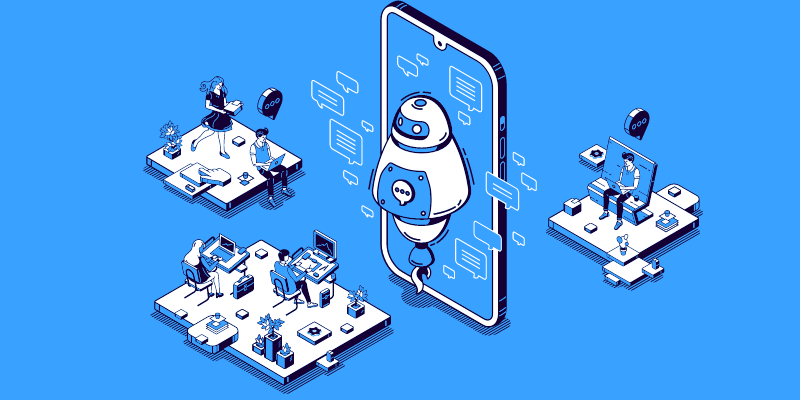
Chatbots have the potential to completely transform customer interactions by offering round-the-clock service, addressing inquiries, and facilitating sales. As AI continues to advance, we can expect an increase in the number of chatbots in the future.
A report from precedenceresearch states that the global chatbot market size is expected to reach around USD 4.9 billion by 2032 from USD 0.84 billion in 2022.
Some known examples of commercially deployed chatbots include Amazon Alexa, Facebook Messenger Bots, Slack Bots, Google Dialogflow (a platform for chatbot development), and Amazon Lex (a chatbot developed by Amazon Web Services).
By incorporating AI capabilities, these chatbots enhance their functionalities. Offer intelligent experiences while effectively understanding language and providing responses to complex queries. Moreover, they can be personalized according to preferences.
A few recent examples of AI-powered chatbots include LaMDA, developed by Google AI, ChatGPT, by OpenAI, and Meta’s new AI model called Llama 2.
Data Security
We have seen and read automation in various fields, but data security is not left behind. Automation in data security involves using technology to automate security tasks, such as scanning for vulnerabilities, responding to incidents, managing patches, scheduling updates, provisioning users, managing configurations, and more.
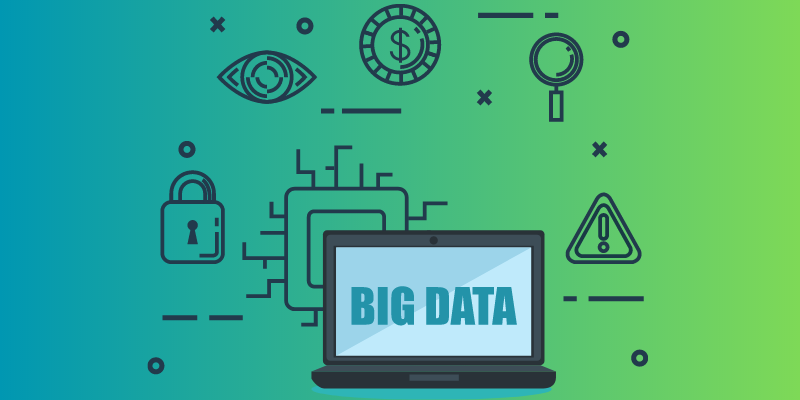
This type of automation is implemented in large enterprises to support a large number of security-related incidence or activities that takes place on a daily basis.
Below are a few advantages of the data security automation
- Reduces the volume of support tickets
- Increases speed and effectiveness of security operations
- Allows support team to focus on strategic responsibilities.
- Reduces manual errors
- Simplifies compliance with security regulations
The topmost tools utilized for automating data security consist of SIEM (Security Information and Event Management), SOAR (Security Orchestration, Automation, and Response), and CMDB (Configuration Management Database).
The Companies that are leading in this sector include Cisco, Palo Alto Networks, Symantec, IBM, etc.
Digital Twin
A Digital twin is a model of an object or system mirroring its functions via actual data. It enables testing-free exploration of product improvement and solutions. Data from sensors, devices, and interconnections are integrated to create digital twins, updating in real-time to match current conditions and performance.
Digital twins have diverse uses in sectors like manufacturing, healthcare, transportation, and energy. They provide advantages such as improved productivity, customized healthcare treatments, efficient transportation operations, and proactive energy maintenance.
The global digital twin market size is expected to grow staggering CAGR of 42.6% from 2023 to 2030, elevating its market size to USD 137.67 billion from USD 11.51 billion.
The integration of IoT, AI, and software analytics elevates the user experience for these twins.
Some major benefits of twins comprise monitoring systems or processes in real-time, analyzing to predict future trends or issues, and comprehending complex systems or processes through simulation-based representations with remote control capabilities.
Some use cases: Digital twins are employed in healthcare to simulate patients and plan surgeries. Energy digital twins enhance energy systems, and product digital twins assess product performance. Factory digital twins optimize production schedules by identifying bottlenecks and improving energy utilization.
For more information, you can visit the Digital twin technology section.
Service Orchestration and Automation Platforms (SOAPs)
Service orchestration and automation platforms (SOAPs) automatize IT processes in hybrid environments. These platforms enable Infrastructure and Operations (I&O) leaders to effortlessly implement business services by integrating workflow orchestration, workload automation, and resource provisioning.

The Gartner report foresees around 80% of organizations presently using workload automation will likely embrace SOAPs by 2025’s close. These SOAPs will enable the orchestration of workloads across IT and business domains.
SOAPs offer a centralized administration console and an orchestration engine that efficiently handle workloads, data pipelines, and application workflows. They surpass conventional workload automation as they encompass data pipelines, cloud-native infrastructure, and application architectures.
Some examples of SOAPs usage are: enabling software companies to automate software release distribution to clients, automating loan application processing for financial services firms, and automating patient appointment scheduling for healthcare institutions.
The following are some of the top companies offering SOAPs solutions:
- Amazon Web Services (AWS) Step Functions
- BMC TrueSight Orchestration
- OpenText Operations Orchestration
- ServiceNow Now Platform
- VMware Aria Automation
SOAPs balance DevOps toolchains, boosting customer-focused agility, cost reductions, operational efficiency, and process standardization.
Collaborate Robots (Cobots)
Collaborative robots, referred to as Cobots, are purposely designed to work alongside humans while prioritizing safety. Unlike regular robots, Cobots are smaller, lighter, and equipped with features aimed at minimizing the risk of causing harm to humans. These features include force limitation mechanisms, soft materials, and sensors.

Cobots have a range of applications across industries such as manufacturing, healthcare, and logistics. They can undertake tasks including assembly, welding, painting, and packaging. By automating these tasks, previously performed by humans, Cobots contribute to increased productivity levels, enhanced safety measures, improved quality control processes, and cost reduction.
Global research site marketsandmarkets predict Cobots’ market size will surge from USD 1.2 billion in 2023 to USD 6.8 billion in 2029, with an impressive 34.3% CAGR.
As Artificial Intelligence (AI) progresses further in the future, we can anticipate the emergence of advanced Cobots. These next-generation Cobots may possess computer vision capabilities. Incorporate machine learning algorithms along with robotics middleware. This integration will enable them to perform various tasks with heightened safety measures and precision.
Consequently, this transformation will reshape the business landscape. The fusion of Artificial Intelligence (AI) with technologies enhances the capabilities of Cobots by integrating computer vision techniques, machine learning algorithms, and robotics middleware.
This integration empowers Cobots to implement collision avoidance strategies while acquiring skills through enhanced connectivity opportunities. Consequently, this significantly elevates the performance levels of these systems.
Leading companies in the field of collaborative robot development, construction, and solution provision include Universal Robots, ABB, Fanuc, and others.
Robotic Process Automation (RPA)
Robotic Process Automation (RPA) has quickly gained traction in the automation field. It’s a real game-changer for businesses, regardless of their size, as it simplifies task management and automation. RPA operates on predetermined rules, resulting in enhanced efficiency, heightened productivity, and reduced costs altogether.

RPA uses bots that mimic human actions to automate tasks like processes, workflows, data extraction, content creation, managing communication, supporting customers, and providing data.
As per the research, the RPA market is expected to grow significantly in the next decade. Its market size was $2,659M in 2022 and is expected to reach around $66,079M by 2032, which is approximately 37.9% CAGR.
Because of its incredible flexibility, it’s widely embraced in various sectors like IT, finance, healthcare, retail, and manufacturing. It’s utilized to automate workflows and processes, streamline loan approvals, organize appointment scheduling, fulfill orders, and track production, among other things. Moreover, RPA boosts precision and ensures compliance by reducing the chances of human errors.
Well-known industry leaders in RPA include Microsoft Power Automate, a fantastic cloud-based RPA platform; IBM Robotic Process Automation; SAP Build Process Automation; Uipath Business Automation platform, etc.
Final Words
Above stated Automation examples simply demonstrate the growing trends in IT automation. The field of IT is continuously evolving with new emerging technologies, and the approach towards automation is shaping the landscape of various industries.
Businesses are eagerly adopting these trends to optimize their operations enhance productivity, and excel customer experiences.
Next, check out popular Robotic Process Automation (RPA) tools.
Si quiere puede hacernos una donación por el trabajo que hacemos, lo apreciaremos mucho.
Direcciones de Billetera:
- BTC: 14xsuQRtT3Abek4zgDWZxJXs9VRdwxyPUS
- USDT: TQmV9FyrcpeaZMro3M1yeEHnNjv7xKZDNe
- BNB: 0x2fdb9034507b6d505d351a6f59d877040d0edb0f
- DOGE: D5SZesmFQGYVkE5trYYLF8hNPBgXgYcmrx
También puede seguirnos en nuestras Redes sociales para mantenerse al tanto de los últimos post de la web:
- Telegram
Disclaimer: En Cryptoshitcompra.com no nos hacemos responsables de ninguna inversión de ningún visitante, nosotros simplemente damos información sobre Tokens, juegos NFT y criptomonedas, no recomendamos inversiones

